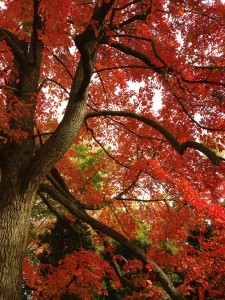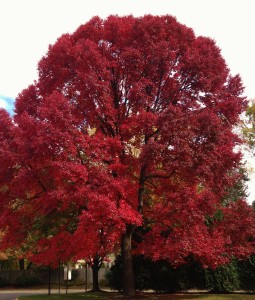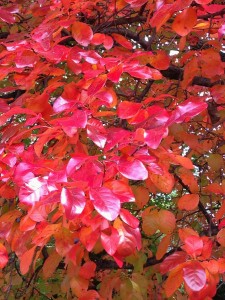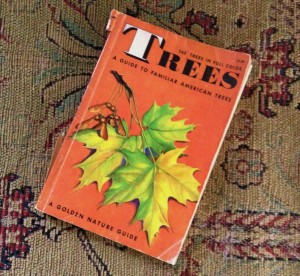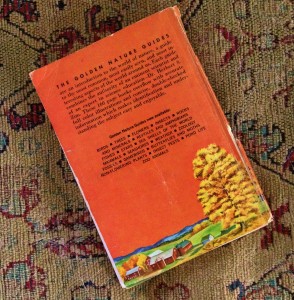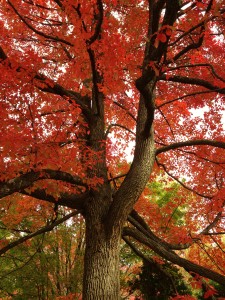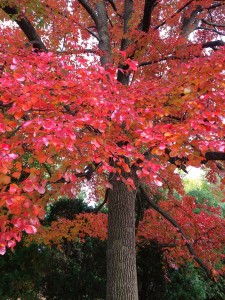Today is the day for that steady, late fall rain that washes much of the brilliant color from the trees. In tomorrow’s sunshine, many branches will be newly bare. Gutters and lawns, though, will gleam red, orange and gold. One of the brightest patches in our area will be beneath this magnificent tree.
Located behind our church, it’s adorned with some of the most vividly red leaves imaginable. I’d always assumed it was a maple. When someone referred to it as an oak, I knew that wasn’t right. But in September, when Kiko and I were sitting in its shade for the Blessing of the Animals, I realized I was wrong, too. This was no maple. The leaves, still green then, were the wrong shape. And there were berries. Bluish-purple berries, like elongated blueberries.
What was this tree? No one seemed to know. But mention “that red tree by the church” and everyone knew exactly which one you meant. I began an internet search. Googling “trees with blue berries” didn’t provide a quick answer.
Then I remembered my little tree book, which I’d recently brought from Atlanta. As I mentioned in a previous tree post, a neighbor gave me the book when I was a child. She encouraged me to look closely and appreciate nature as we saw it all around us. She was Eugenia Brown, a Southern lady with a Southern name, a proud graduate of Decatur’s Agnes Scott College some decades before. (Daddy thought she was too old to be talking so much about her Agnes Scott days.) Mrs. Brown was a wise woman, and I’ve only recently begun to realize the impression she made on me. She wasn’t particularly religious, but I can see now that when we examined leaves, acorns, pine cones, shells and flowers, she encouraged my sense of wonder for that vast and easily overlooked array of amazing little things God made. His little creations–those unique, tiny masterpieces of design–they have always brought me joy. For that gift, I thank Mrs. Brown.
I found the book, and sure enough, I discovered the tree almost immediately, recognizing it from the handy close-up painting of its red leaves and berries. It’s a Black Gum tree. Also known as Black Tupelo, Sourgum or Pepperidge. According to the concise text, “Black Gum leaves are smooth and shiny, turning brilliant red in fall. The dark blue fruit is eaten by birds and small mammals.” Bingo.
Yet again, thank you, Mrs. Brown. And thank you, God. Had I not known Mrs. Brown, had she not given me the tree book, I might not be able to find such solace in the beauty of little things and the God who made them. How wonderful it is that our God designed bright red canopies with plump blue berries to shelter and sustain His littlest winged and furry creatures! To paraphrase that old hymn, His eye is on the berry, and I know he watches me.
